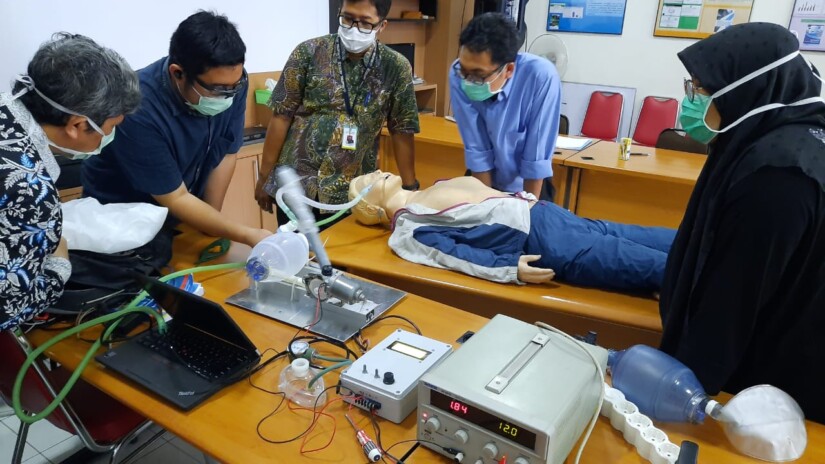
A ventilator is essential for COVID-19 patients in critical condition who need to breathe appropriately and generally so that they can survive and recover. So it comes as no surprise if ventilators considered to be lifesaver of COVID patients because they help patients breathe mechanically. It happens because the patients’ lungs are not able to pump air in and out.
To meet the needs of ventilators for COVID patients in health clinic/puskesmas and hospitals, which are still very minimal, the UGM Lecturer Team is developing a ventilator for COVID patients in collaboration with Toyota and the local industry in Yogyakarta. In their development, they collaborated with UGM colleagues doctors and doctors of Sardjito Hospital. “As we all know, the need for ventilators is very vital due to the increasing number of sufferers COVID-19. In the manufacturing process, our team also involved doctor relatives,” said Dr. Adhika Widyaparaga, S.T., M. Biomed. E. In an online interview with reporters on Tuesday (7/4).
In this one month, together with colleagues from the UGM Faculty of Engineering and fellow doctors, continue to work on perfecting portable ventilators that are practical and convenient to use with affordable manufacturing costs. According to him, to realize the prototype ventilator is not simple because what they design really must be able to meet health standards set by the government. Therefore, it involves doctors and medical staff at the hospital. “The main challenge is how to make the tools that we have designed is safe for patients and meet the needs of patients and medical personnel. That’s where the integration of the technical team with the medical team becomes crucial. Do not let the tools we make turned out to be of no use or even dangerous to use,” he said.
He acknowledged his team was cautious about making this ventilator by more considering the performance of the tool and the level of safety. Although there has been progress, it is currently improving the function of monitoring pressure, flow, oxygen levels, and the ability to set parameters for flow, pressure, respiratory rate. “It needs precision and has a decent response speed. The doctor relatives in our team became a reference to assess the readiness of this tool,” he said.
Even though it is only a prototype, he is optimistic that the ventilators they are working on will later be applied well and produced more to meet the needs of public health service facilities. “We haven’t made much. It is still in trial. We have tested it with our doctor teams at Sardjito Hospital. Yet, it is still refinement. Yesterday, there were some additional sensors requested by the team of doctors because the measurements were quite important,” he said.
The plan is the UGM team will make three types of ventilators, namely the fully-featured ventilator (high end) version, the low-cost version, and the Ambu bag conversion. According to him, either ventilators without Ambu bag or using Ambu bag versions of the manufacturing process are so cheap that they can be produced in large quantities and can be easily accessed even by puskesmas. “Our target is maximum in two weeks. All security features, sensors, and modes are complete, and the prototype has been configured, so it can be used,” he concluded.
Author: Gusti Grehenson
Translator: Natasa A

